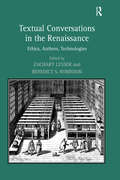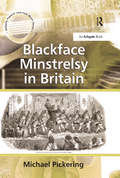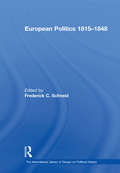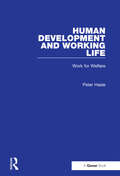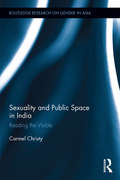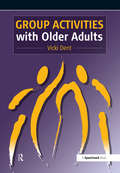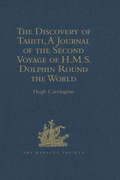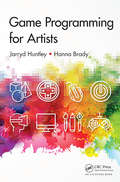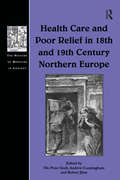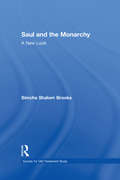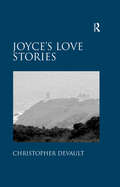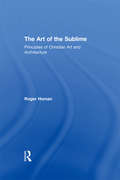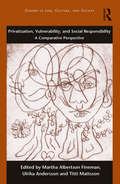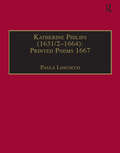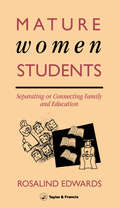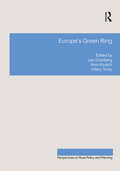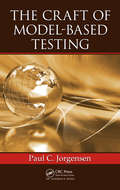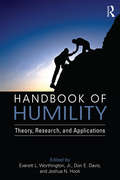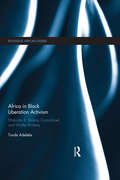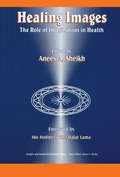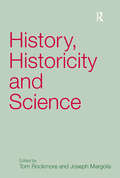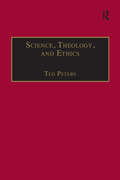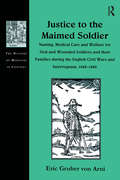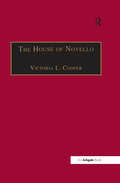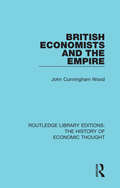- Table View
- List View
Textual Conversations in the Renaissance: Ethics, Authors, Technologies
by Benedict S. Robinson'Conversation is the beginning and end of knowledge', wrote Stephano Guazzo in his Civil Conversation. Like Guazzo's, this is a book dedicated to the Renaissance concept of conversation, a concept that functioned simultaneously as a privileged literary and rhetorical form (the dialogue), an intellectual and artistic program (the humanists' interactions with ancient texts), and a political possibility (the king's council, or the republican concept of mixed government). In its varieties of knowledge production, the Renaissance was centrally concerned with debate and dialogue, not only among scholars, but also, and perhaps more importantly, among and with texts. Renaissance reading practices were active and engaged: such conversations with texts were meant to prepare the mind for political and civic life, and the political itself was conceived as fundamentally conversational. The humanist idea of conversation thus theorized the relationships among literature, politics, and history; it was one of the first modern attempts to locate cultural production within a specific historical and political context. The essays in this collection investigate the varied ways in which the Renaissance incorporated textual conversation and dialogue into its literary, political, juridical, religious, and social practices. They focus on the importance of conversation to early modern understandings of ethics; on literary history itself as an ongoing authorial conversation; and on the material and textual technologies that enabled early modern conversations.
Blackface Minstrelsy in Britain
by Michael PickeringBlackface minstrelsy is associated particularly with popular culture in the United States and Britain, yet despite the continual two-way flow of performers, troupes and companies across the Atlantic, there is little in Britain to match the scholarship of blackface studies in the States. This book concentrates on the distinctively British trajectory of minstrelsy. The historical study and cultural analysis of minstrelsy is important because of the significant role it played in Britain as a form of song, music and theatrical entertainment. Minstrelsy had a marked impact on popular music, dance and other aspects of popular culture, both in Britain and the United States. Its impact in the United States fed into significant song and music genres that were assimilated in Britain, from ragtime and jazz onwards, but prior to these influences, minstrelsy in Britain developed many distinct features and was adapted to operate within various conventions, themes and traditions in British popular culture. Pickering provides a convincing counter-argument to the assumption among writers in the United States that blackface was exclusively American and its British counterpart purely imitative. Minstrelsy was not confined to its value as song, music and dance. Jokes at the expense of black people along with demeaning racial stereotypes were integral to minstrel shows. As a form of popular entertainment, British minstrelsy created a cultural low-Other that offered confirmation of white racial ascendancy and imperial dominion around the world. The book attends closely to how this influence on colonialism and imperialism operated and proved ideologically so effective. At the same time British minstrelsy cannot be reduced to its racist and imperialist connections. Enormously important as those connections are, Pickering demonstrates the complexity of the subject by insisting that the minstrel show and minstrel performers are understood also in terms of their own theatrical dynamics, t
European Politics 1815–1848 (The International Library of Essays on Political History)
by Frederick C. SchneidThe three intervening decades between the Congress of Vienna and the Revolutions of 1848 are marked by enormous social, political, economic and cultural change. Liberalism, nationalism, romanticism and industrialism profoundly affected the course of Europe and compelled conservative monarchies to accept the principles of collective action and military force to curb political revolution. In the years immediately following 1815, the Quadruple and Holy Alliances served the dual purpose of preventing a restoration of Bonapartism and suppressing revolutions. By the 1820s these international associations dissipated, but the principles upon which they were founded informed the decisions of the respective governments through 1848. The classic articles and papers collected in this volume attempt to illustrate that despite the substantial changes to European society which occurred during these thirty years, European powers accepted common principles which influenced their state's domestic and foreign policies.
Human Development and Working Life: Work for Welfare
by Peter HasleHuman Development and Working Life - Work for Welfare explores whether the development of human resources at company level can improve individuals' quality of life, company's possibilities of development, and welfare and democracy in society. The book refers to cases where attempts have been made to improve quality of working life and competitiveness of the company. Possibilities and hindrances to combine social improvements and competition in the development of human resources are discussed. During the last 10 years most European countries have increased investments in the development of human resources at work as a vehicle for social development. The public investment in training, rehabilitation and support for innovation has increased; and at the same time the labour market has been deregulated to remove obstacles for flexibility and business development. The aim of the book is to promote knowledge about how to integrate social development and flexibility at the company level.
Sexuality and Public Space in India: Reading the Visible (Routledge Research on Gender in Asia Series)
by Carmel ChristyThe topic of sexuality and gender within the South Asian context is timely and widely discussed across a variety of academic disciplines. Since the end of the last century, there have been debates in the cultural sphere in India on issues concerning Lesbian Gay Bisexual Transgender people’s rights, gender, sex workers’ rights and caste. There has also been an explicit visibility for sexuality in the form of discussion around intimate scenes in films, advertisements and moral concerns around pre-marital heterosexual relationships and same-sex relationships. This book brings out the modalities through which explicit visibility of sexuality gets constituted in the public space of India after the 1990s. The specificities through which relations of gender/ sexuality and caste get constituted and performed in regional media provide significant entry points to an understanding of larger structures and the ever-present fissures through which these larger structures emerge. Focussing on the southern state of Kerala, the book investigates women’s sexuality and caste through a number of case studies: the Suryanelli rape case, neology in the media and the debates around the life narratives of Nalini Jameela, a sex worker. The book does not stop at representational practices as it also looks at the negotiations between the subject and her represented figures which is a significant addition to the existing body of work in the field of media and gender studies. Sexuality and Public Space in India is a careful interrogation of the mass-mediatized space of contemporary public discourse around sexuality. It will be of interest to academics in South Asian Studies, Sociology, Anthropology and Gender Studies.
Group Activities with Older Adults
by Vicki DentIf you have responsibility for providing activities for older adults and you aren't sure whether what you are providing is effective, or you have exhausted all your own activity ideas then this book is for you. This clear and easy-to-use resource provides the tools you require to develop and implement a range of activities that meet the needs of your group. Structured around the ten areas of activity need - cognitive, creative, cultural, educational/employment, emotional, physical, self-esteem, sensory, social and spiritual - this book is a resource of activity ideas with hints, tips and suggestions for successful planning and delivery, and guidance on recording and evaluating activity programmes. It explores some of the adaptations required to meet the needs of younger clients, those with dementia, and those with communication difficulties. It is an ideal resource for anyone working with elderly people wanting to improve on an existing activity programme, or wishing to commence one.
The Discovery of Tahiti, A Journal of the Second Voyage of H.M.S. Dolphin Round the World, under the Command of Captain Wallis, R.N.: In the Years 1766, 1767, and 1768, Written by her Master, George Robertson (Hakluyt Society, Second Series)
by Hugh CarringtonThis is a new print-on-demand hardback edition of the volume first published in 1948.
Game Programming for Artists
by Jarryd Huntley Hanna BradyGame Programming for Artists provides a foundation for artists and creatives to jumpstart learning to program their own games. It is an accessible and conversational guide focused on three areas: basic programming, understanding game engines, and practical code for commonly employed game systems. The best way to get into games is to make one, and this book will help artists do that!
Health Care and Poor Relief in 18th and 19th Century Northern Europe (The History of Medicine in Context)
by Ole Peter Grell Andrew CunninghamThroughout history governments have had to confront the problem of how to deal with the poorer parts of their population. During the medieval and early modern period this responsibility was largely borne by religious institutions, civic institutions and individual charity. By the eighteenth century, however, the rapid social and economic changes brought about by industrialisation put these systems under intolerable strain, forcing radical new solutions to be sought to address both old and new problems of health care and poor relief. This volume looks at how northern European governments of the eighteenth and nineteenth centuries coped with the needs of the poor, whilst balancing any new measures against the perceived negative effects of relief upon the moral wellbeing of the poor and issues of social stability. Taken together, the essays in this volume chart the varying responses of states, social classes and political theorists towards the great social and economic issue of the age, industrialisation. Its demands and effects undermined the capacity of the old poor relief arrangements to look after those people that the fits and starts of the industrialisation cycle itself turned into paupers. The result was a response that replaced the traditional principle of 'outdoor' relief, with a generally repressive system of 'indoor' relief that lasted until the rise of organised labour forced a more benign approach to the problems of poverty. Although complete in itself, this volume also forms the third of a four-volume survey of health care and poor relief provision between 1500 and 1900, edited by Ole Peter Grell and Andrew Cunningham.
Saul and the Monarchy: A New Look (Society for Old Testament Study)
by Simcha Shalom BrooksThe negative biblical presentation of King Saul of Israel has been biased in favour of David at the expense of Saul. This book presents a more positive picture and more realistic view of the culture of the period extending from Saul to the schism. Simcha Shalom Brooks explores a number of controversial issues such as the historicity of the biblical text on which so many modern scholars are sharply divided; that David was ambitious and coveted Saul's throne, and even though David became king, the people continued to support the house of Saul. This book makes a valuable contribution to the current biblical debate as to the existence of ancient Israel in the Iron Age 1 Period. Simcha Shalom Brooks draws on literary, historical and archaeological material to present a balanced view of the period.
Joyce's Love Stories
by Christopher DeVaultIn his comprehensive study of love in James Joyce's writings, Christopher DeVault suggests that a love ethic persists throughout Joyce's works. DeVault uses Martin Buber's distinction between the true love for others and the narcissistic desire for oneself to frame his discussion, showing that Joyce frequently ties his characters' personal and political pursuits to their ability to affirm both their loved ones and their fellow Dubliners. In his short stories and novels, DeVault argues, Joyce shows how personal love makes possible a broader social compassion that creates a more progressive body politic. While his early protagonists' narcissism limits them to detached engagements with Dublin that impede effective political action, Joyce demonstrates the viability of his love ethic through both the Blooms’ empathy in Ulysses and the polylogic dreamtext of Finnegan's Wake. In its revelation of Joyce's amorous alternative to the social and political paralysis he famously attributed to twentieth-century Dublin, Joyce's Love Stories allows for a better appreciation of the ethical and political significance underpinning the author's assessments of Ireland.
The Art of the Sublime: Principles of Christian Art and Architecture
by Roger HomanIn the view of Hegel and others, pagan art is the art of the beautiful and Christian art is the art of the sublime. Roger Homan provides a comprehensive and informative account of the course of Christian art, encompassing a re-evaluation of conventional aesthetics and its application to religious art. Homan argues that taste and aesthetics are fashioned by morality and belief, and that Christian art must be assessed not in terms of its place in the history of art but of its place in Christian faith. The narrative basis of Christian art is documented but religious art is also explored as the expression of the devout and as an element in the trappings of collective expression and personal quest. Sections in the book explore pilgrimage art, puritan art, the tension of Gothic and Classical, church architecture and the language of worship. Current areas of debate, including the relationship of ethics to the appreciation of art, are also discussed. An extensive range of examples of painting, architecture and decoration, most of which are of European origin, are discussed throughout, with a number of striking illustrations included within the text.
Privatization, Vulnerability, and Social Responsibility: A Comparative Perspective (Gender in Law, Culture, and Society)
by Martha Albertson Fineman Ulrika Andersson Titti MattssonTaking a cross-cultural perspective, this book explores how privatization and globalization impact contemporary feminist and social justice approaches to public responsibility. Feminist legal theorists have long problematized divisions between the private and the political, an issue with growing importance in a time when the welfare state is under threat in many parts of the world and private markets and corporations transcend national boundaries. Because vulnerability analysis emphasizes our interdependency within social institutions and the need for public responsibility for our shared vulnerability, it can highlight how neoliberal policies commodify human necessities, channeling unprofitable social relationships, such as caretaking, away from public responsibility and into the individual private family. This book uses comparative analyses to examine how these dynamics manifest across different legal cultures. By highlighting similarities and differences in legal responses to vulnerability, this book provides important insights and arguments against the privatization of social need and for a more responsive state.
Katherine Philips: Printed Writings 1641–1700: Series II, Part Three, Volume 2 (The Early Modern Englishwoman: A Facsimile Library of Essential Works & Printed Writings, 1641-1700: Series II, Part Three)
by Paula LoscoccoKatherine Philips was a major seventeenth-century poet and playwright who became widely known for her innovative use of Donnean poetics to express passionate female friendship, her occasional verses on private friends and public figures, and her moral and political acuity. She had the mixed fortune of being enshrined in posthumous volumes that both celebrated and misrepresented her achievement. Fortunately recent research has clarified our understanding of who Philips was and how she conducted her literary career.
Mature Women Students: Separating Of Connecting Family And Education (Gender And Society Ser.)
by Rosalind Edwards South Bank University.First Published in 1993. Routledge is an imprint of Taylor & Francis, an informa company.
Europe's Green Ring (Perspectives on Rural Policy and Planning)
by Leo Granberg Imre KováchAround the fringe of Europe lies a green ring of countries which have followed different pathways into modernity from the industrial core of the continent and have, until recently, been characterized by a strong agrarian presence in their politics, economy and culture. This book brings together case studies from both the post-socialist countries and EU member states which make up the green ring to compare experiences of rural and agricultural groups. It provides a fascinating opportunity to identify similarities and contrasts in the ways in which these countries have managed their rural areas when faced with the challenges set by industrialization, political integration and globalization. The book focuses on agrarian transformation as de- (and sometimes re- ) peasantization - referring to the changing economic, social, cultural and political positions of farmers and food production workers. It also problematizes the standard rural models and opens up discussion of the problems these models pose for the farmers of the green ring countries.
The Craft of Model-Based Testing
by Paul C. JorgensenIn his latest work, author Paul C Jorgensen takes his well-honed craftsman’s approach to mastering model-based testing (MBT). To be expert at MBT, a software tester has to understand it as a craft rather than an art. This means a tester should have deep knowledge of the underlying subject and be well practiced in carrying out modeling and testing techniques. Judgment is needed, as well as an understanding of MBT the tools. The first part of the book helps testers in developing that judgment. It starts with an overview of MBT and follows with an in-depth treatment of nine different testing models with a chapter dedicated to each model. These chapters are tied together by a pair of examples: a simple insurance premium calculation and an event-driven system that describes a garage door controller. The book shows how simpler models—flowcharts, decision tables, and UML Activity charts—express the important aspects of the insurance premium problem. It also shows how transition-based models—finite state machines, Petri nets, and statecharts—are necessary for the garage door controller but are overkill for the insurance premium problem. Each chapter describes the extent to which a model can support MBT. The second part of the book gives testers a greater understanding of MBT tools. It examines six commercial MBT products, presents the salient features of each product, and demonstrates using the product on the insurance premium and the garage door controller problems. These chapters each conclude with advice on implementing MBT in an organization. The last chapter describes six Open Source tools to round out a tester’s knowledge of MBT. In addition, the book supports the International Software Testing Qualifications Board’s (ISTQB®) MBT syllabus for certification.
Handbook of Humility: Theory, Research, and Applications
by Everett L. Worthington Jr. Don E. Davis Joshua N. HookThe Handbook of Humility is the first scholarly book to bring together authors from psychology as well as other fields to address what we know and don’t know about humility. Authors review the existing research in this burgeoning field that has well over 100 empirical articles and an increasing trajectory of publication. This work should form the basis for research in humility for many years. In this book, chapters address definitions of humility that guide research. Authors also reflect on the practical applications of humility research within the areas they reviewed. The book informs people who study humility scientifically, but it is also an exceptional guide for psychotherapists, philosophers, religious and community leaders, politicians, educated lay people, and those who would like to fuel an informed reflection on how humility might make interactions more civil in relationships, organizations, communities, political processes, and national and international relations.
Africa in Black Liberation Activism: Malcolm X, Stokely Carmichael and Walter Rodney (Routledge African Studies)
by Tunde AdelekeThis book revisits and analyzes three of the most accomplished twentieth century Black Diaspora activists: Malcolm X (1925–1965), Stokely Carmichael (1941–1998) and Walter Rodney (1942–1980). All three began their careers in the Diaspora and later turned toward Africa. This became the foundation for developing and solidifying a global force that would advance the struggles of Africans and people of African descent in the Diaspora. Adeleke engages and explores this “African-centered” discourse of resistance which informed the collective struggles of these three men. The book illuminates shared and unifying attributes as well as differences, presenting these men as unified by a continuum of struggle against, and resistance to, shared historical and cultural challenges that transcended geographical spaces and historical times. Africa in Black Liberation Activism will be of interest to scholars and students of African-American history, African Studies and the African Diaspora.
Healing Images: The Role of Imagination in Health (Imagery and Human Development Series)
by Anees Ahmad Sheikh"Healing Images: The Role of Imagination in Health" details the function and capacity of imagination in health. This work consists of 22 chapters and discusses theory, research, and clinical applications. Presented is a brief history of the use of imagery for healing in both Eastern and Western traditions, a review of research that deals with the physiological consequences of imagery and related approaches, and an explanation of how images lead to such bodily changes. "Healing Images" covers the latest theory and research on the relationship between imagery, cerebral laterality, and healing. An attempt is also made to integrate modern systems theory with concepts of information and energy, which disclose the role of imagery and love in health. Imagery and music in health are also discussed.
History, Historicity and Science
by Joseph MargolisThis fresh collection of essays questions how the historical process affects our conception of science, including our understanding of its validity as well as our general conception of knowledge. The essays in this book consider the philosophical labours spanning the work of Descartes, Kant and Hegel, still the philosophical basis of our modern understanding of science, as well as recent selected philosophers and historians of science such as Kuhn and Feyerbend. Themes raised include the philosophical basis for the validity of science, the possibility of ever knowing the independent world as it truly is, and the intelligibility of construing scientific knowledge as a historical. Taken separately and together, these essays provide a sustained analysis of scientific claims to objective standing, the historicity of thought and inquiry. They point toward unfinished philosophical business and the need for a new beginning.
Science, Theology, and Ethics (Routledge Science and Religion Series)
by Ted PetersScience challenges faith to seek fuller understanding, and faith challenges science to be socially and ethically responsible. This book begins with faith in God the Creator of the world, and then expands our understanding of creation in light of Big Bang cosmology and new discoveries in physics. Examining the expanding frontier of genetic research, Ted Peters draws out implications for theological understandings of human nature and human freedom. Issues discussed include: methodology in science and theology; eschatology in cosmology and theology; freedom and responsibility in evolution and theology; and genetic determinism, genetic engineering, and cloning in relation to freedom, the comodification of human life, and equitable distribution of the fruits of genetic technology. The dialogue model of relationship between science and religion, proposed in this book, provides a common ground for the disparate voices among theologians, scientists, and world religions. This common ground has the potential to breathe new life into current debates about the world in which we live, move, and have our being.
Justice to the Maimed Soldier: Nursing, Medical Care and Welfare for Sick and Wounded Soldiers and their Families during the English Civil Wars and Interregnum, 1642–1660 (The History of Medicine in Context)
by Eric Gruber ArniIn the popular imagination, the notion of military medicine prior to the twentieth century is dominated by images of brutal ignorance, superstition and indifference. In an age before the introduction of anaesthetics, antibiotics and the sterilisation of instruments, it is perhaps unsurprising that such a stereotyped view has developed, but to what degree is it correct? Whilst it is undoubtedly true that by modern standards, the medical care provided in previous centuries was crude and parochial, it would be wrong to think that serious attempts were not made by national bodies to provide care for those injured in the military conflicts of the past. In this ground breaking study, it is argued that both sides involved in the civil wars that ravaged the British Isles during the mid seventeenth century made concerted efforts to provide medical care for their sick and wounded troops. Through the use of extensive archival sources, Dr Gruber von Arni has pieced together the history of the welfare provided by both Parliamentarian and Royalist causes, and analyses the effectiveness of the systems they set up.
The House of Novello: Practice and Policy of a Victorian Music Publisher, 1829-1866
by VictoriaL. CooperBy the mid-nineteenth century music publishing was no longer the provenance of shopkeepers, instrument makers or individual scholars, but a business enterprise undertaken by a new breed of Victorian entrepreneur. Two such were Vincent Novello and his son Alfred, whose music publishing house enjoyed significant growth between 1829 and 1866. Victoria Cooper builds up a picture of Novello during this period and the socio-economic and cultural climate that influenced the company's business decisions. Looking in detail at some of the editions Novello published, she analyzes the editing style of the firm and how this was dictated by Novello's main audience of amateur musicians and choral societies. Scrutiny of Novello's stockbook indicates the financial fortunes of these editions, while correspondence between the firm and composers such as Mendelssohn reveals how Vincent and Alfred went about acquiring new compositions. With its focus on the development of a music publishing business, this study brings a fresh dimension to musicological research. Novello was able to combine business practice with a commitment to disseminate music of educational and artistic value, and the history of the company provides illuminating evidence of the commodification of music in nineteenth-century Britain.
British Economists and the Empire (Routledge Library Editions: The History of Economic Thought)
by John Cunningham WoodThis study, first published in 1983, is primarily concerned with what the British economists over the period 1860 to 1914 wrote on a range of economic and non-economic aspects of the British Empire, and the reasons for their conclusions. The attempt is also made to correct the view that mainstream British economists after 1860 were antithetical to the concept of empire. This title will be of interest to students of economic thought.
